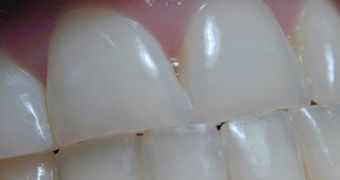For a long time, dentists have expressed their amazement at how the outer layer covering the teeth, the enamel, manages to endure so much stress and wear over the course of a lifetime without degrading or decaying too much. This is especially hard to explain, considering that the material itself is only as tough as glass. But new studies have recently showed that it's not the strength of the material that makes the difference, but its structure. Now, experts plan to use this new-found knowledge to design next-generation aircraft.
In order to determine the enamel's source of strength, experts from the Tel Aviv University's School of Mechanical Engineering, in Israel, the National Institute of Standards and Technology (NIST), and the George Washington University (GWU), in the US, analyzed thousands of extracted teeth, by subjecting them to various tests. In charge of the team was TAU expert, Professor Herzl Chai. The scientists used various instruments to apply mechanical pressure to enamel, and studied the deformations that appeared both on the surface and inside the teeth using powerful observation equipment.
“Teeth are made from an extremely sophisticated composite material which reacts in an extraordinary way under pressure. Teeth exhibit graded mechanical properties and a cathedral-like geometry, and over time they develop a network of micro-cracks which help diffuse stress. This, and the tooth's built-in ability to heal the micro-cracks over time, prevents it from fracturing into large pieces when we eat hard food, like nuts,” Chai explains. The team's study, which covers their finds, is published in the May 5th issue of the journal Proceedings of the National Academy of Sciences (PNAS).
Modern-day aircraft are constructed from composite materials, including fiber glass and carbon, which are held in their place by a brittle matrix. This allows for the bodies to be kept together nicely, and also to absorb large amounts of shock. However, their single-thickness layers are no match to the fiber dispositions inside enamel. According to Chai, the material has “hierarchies” of fibers and matrices arranged in several layers, between which micro-cracks have been observed.
These cracks have the peculiar effect of dispersing the mechanical stress applied on them all over the place. As Chai puts it, tooth fractures “have a hard time deciding which way to go,” and are eventually drained of their destructive power. If engineers manage to replicate this material, then this could lead to much better generations of new composite materials to construct planes from. The new aircraft could handle the demands of flight better and longer, and would be safer for the passengers in case of an impact.

 14 DAY TRIAL //
14 DAY TRIAL //